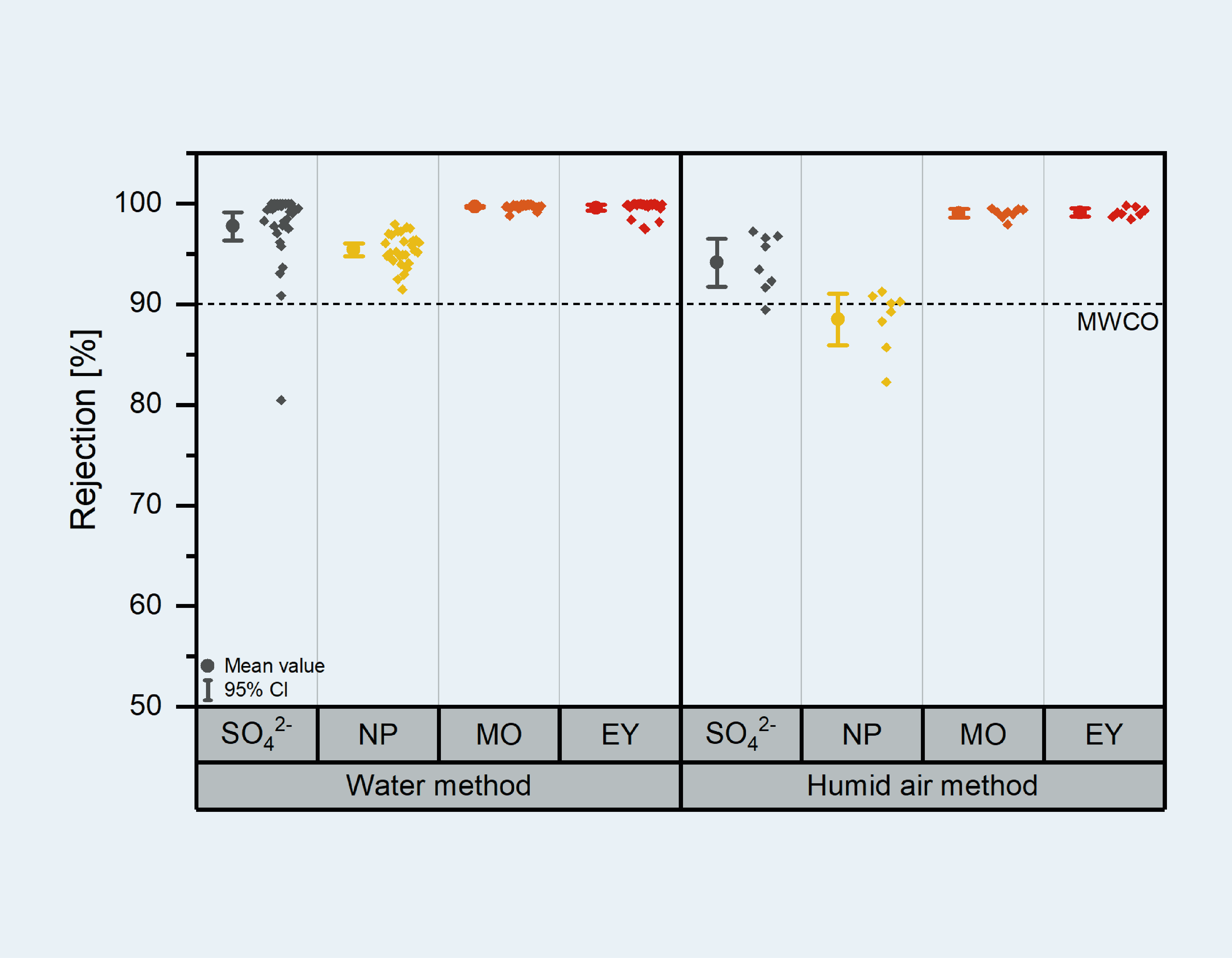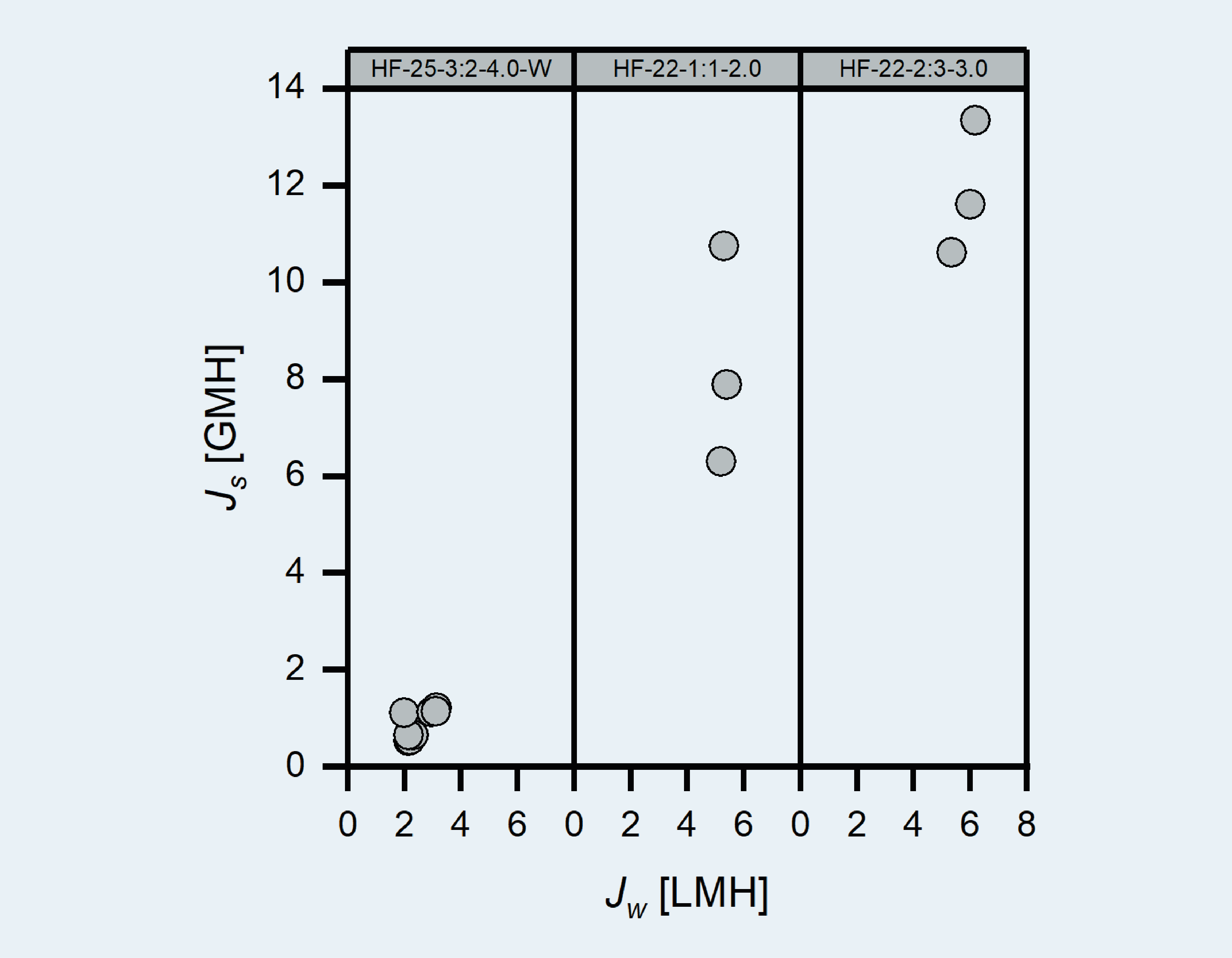One of the late effects of opencast lignite mining in Germany is the large-scale iron and sulfate contamination of ground and surface waters. Therefore, the aim of the SULFAMOS project is to develop and demonstrate a process based on forward osmosis to remove sulfate from surface and ground waters so that they can be used as irrigation and drinking water. For this purpose, hollow fibers based on celluslose acetate were developed at the IGB, which carry the separation layer on the outside and were processed from a green solvent. This allows the hollow fiber membranes to be used directly for treatment in water in the form of submersible modules.
SULFAMOS – Sulfate depletion by forward osmosis and hollow fiber immersion modules



Sulfate depletion from opencast lignite mine using forward osmosis
One of the late effects of lignite mining in Germany is the large-scale iron and sulfate contamination of ground and surface waters. In the case of Lusatia, this not only affects the region itself, but all waterworks using the Spree water, i.e. also Frankfurt/Oder and Berlin. The situation is similar in the Leipzig area and in the future also in the Lower Rhine Bay.
The first objective of the SULFAMOS project is to develop and demonstrate a process based on continuous forward osmosis to remove sulfate from wastewater, surface water and groundwater so that they can be used as irrigation and drinking water.
At the same time, the construction industry will lack the raw material gypsum in the future, which has so far been produced in the flue gas desulfurization plants of lignite-fired power plants. The second goal is therefore to make the sulfate precipitated in the form of gypsum usable as a raw material.
Submersible modules with customized hollow fiber membranes
The task of the IGB in the project is the development of a forward osmosis membrane tailored for this application. For this purpose, hollow fibers based on cellulose acetate were developed, which carry the separation layer on the outside (see Fig. 1) and were processed from a green solvent [1]. This allows the hollow fiber membranes to be used in the form of submersible modules directly for treatment in the water body.
In nanofiltration, the hollow fibers have a high retention for sulfate ion (see Fig. 2). In forward osmosis, water flux and inverse salt flux can be adjusted by post-treatment conditions (Fig. 3). Meanwhile, these hollow fibers can be reproducibly fabricated at 100 m scale and provided to partners for field testing. In the future, the potential of these membranes for energy production will also be investigated [2].
Literature
[1] Götz, T.; Achenbach, B.; Schiestel, T. (2023) Cellulose Acetate Hollow Fiber Membranes for Forward Osmosis Prepared Using a Novel Annealing Procedure and the Green Solvent Agnique® AMD 3 L, J. applied polymer science (submitted).
[2] Touati, K.; Tadeo, F.; Hänel, C.; Schiestel, T. (2015) Effect of the operating temperature on hydrodynamics and membrane parameters in pressure retarded osmosis, Desalination and Water Treatment, doi: 10.1080/19443994.2015.1039600.
Project information
Project title
SULFAMOS – Sulfate depletion by forward osmosis and hollow fiber immersion modules
Project duration
May 2021 – October 2023
Project partners
- G.E.O.S. Ingenieurgesellschaft mbH (Coordinator), Freiberg
- fluvicon GmbH, Frickenhausen
- MionTec GmbH, Leverkusen
- ZBL Borna, Borna
- Fraunhofer IGB, Stuttgart
- HTW Dresden, Dresden
Funding
We would like to thank the German Federal Ministry of Education and Research (BMBF) for funding the SULFAMOS project, promotional reference 02WV1573E.

 Fraunhofer Institute for Interfacial Engineering and Biotechnology IGB
Fraunhofer Institute for Interfacial Engineering and Biotechnology IGB